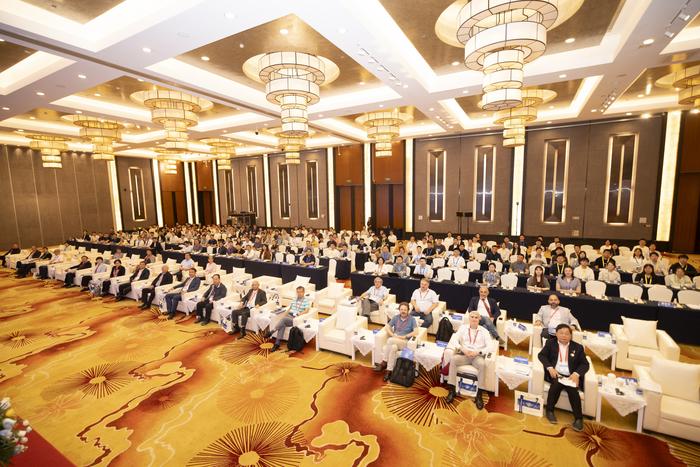The Second International Conference on Space Science and Technology recently took place in Suzhou, Jiangsu Province, drawing the attention of the global aerospace community. Conducted from May 22 to 24, 2025, this significant event saw the gathering of over 300 experts, scholars, and industry representatives from more than ten countries and regions. The conference aimed to bridge gaps in cutting-edge research and innovative applications within the aerospace sector, signaling advancements in interdisciplinary scientific exploration. This assembly of intellects showcased the vitality of global cooperation in the aerospace sciences, setting the stage for significant breakthroughs in our collective quest for deep space exploration.
Hosted by the Beijing Institute of Technology and organized in conjunction with prominent institutions including the National Key Laboratory of Target Cognition and Application Technology and Soochow University, the conference was marked by a profound commitment to sharing knowledge and fostering collaborative efforts in space science. The event’s honorary chairman was Academician Ye Peijian, a distinguished researcher and a celebrated figure known for his contributions to the field as a recipient of the “People’s Scientist” title. His presence highlighted the conference’s commitment to advancing scientific discourse on a global scale.
The opening session was graced by notable addresses from Academician Ye Peijian, alongside co-chairs Academician Jiang Lan and Academician Chen Xiaoqian. Together, they welcomed participants and set a collaborative tone for the discussions that were to follow. The plenary sessions included contributions from leading figures such as Academician Wang Chi and several prominent researchers, and the diversity of expertise presented reflected the multifaceted nature of aerospace sciences today.
In terms of structure, the conference comprised a main forum and four sub-forums, each dedicated to key technological themes within aerospace research. An impressive lineup of over 30 high-quality special reports was delivered, showcasing the latest findings and innovations in the field. The presentations centered on themes such as deep space exploration, advancements in smart technologies applicable to aerospace, and the intricacies of dynamics and control in complex aerospace missions. Each report aimed to shed light on significant technological challenges while proposing potential solutions.
An essential focus of the conference discussions revolved around the pivotal role of artificial intelligence, metamaterials, and advancements in telecommunications technologies such as 6G. Speakers highlighted emerging research directions that date back to astrophysics, planetary science, and beyond. By engaging with these topics, the participants hoped to address key technological bottlenecks hindering progress in areas such as solar system exploration and the construction of lunar research stations.
Networking opportunities were abundant, with interactions between academic elites and commercial enterprises that play critical roles in advancing aerospace technologies. Organizations such as Mino Space and HIT Satellite participated actively, exhibiting the initiative’s commercial interest in integrating scientific research with practical applications. This collaboration represents a significant movement towards uniting theoretical knowledge with industry requirements, crucial for sustainable development in human endeavors related to aerospace exploration.
The conference culminated in a vibrant exchange of ideas, reflecting a collective commitment to fostering an inclusive aerospace innovation ecosystem. As barriers between various disciplines continue to dissolve, this dialogue serves as a catalyst for cross-disciplinary collaborative efforts. Such exchanges not only inspire academic pursuits but also enhance cooperation among experts worldwide, essential for tackling complex issues facing space exploration.
As the conference’s effects reverberate through the academic community, plans for the next iteration are already underway. The upcoming Second International Conference on Space Science and Technology is set to take place at the One North campus of Nanyang Technological University in Singapore from July 22 to 24, 2025. This forthcoming event promises to serve as another vital platform for aerospace community members to converge, share knowledge, and spearhead forward-thinking concepts that push the boundaries of exploration beyond our planet.
The discussions and findings from the Suzhou conference will undoubtedly contribute to shaping future policies and research directions in the aerospace field. The collaborations formed here are essential for enabling the transition from theoretical concepts to practical applications that address real-world challenges. In the fast-paced world of technology, these connections foster innovation that could spur humanity’s exploration of the cosmos.
In conclusion, the Second International Conference on Space Science and Technology has reaffirmed the importance of collective scholarly pursuits in understanding and advancing our capabilities in space exploration. This gathering has not only highlighted the latest research and technological advancements but has also set the foundation for future collaborations that will be needed to explore the far reaches of our universe. The path ahead is undoubtedly thrilling, lined with opportunities for innovation and discovery that could redefine humanity’s future in space.
Subject of Research: Aerospace Science and Technology
Article Title: The Second International Conference on Space Science and Technology: A Gathering of Minds for Humanity’s Deep Space Exploration
News Publication Date: [Insert Date]
Web References: [Insert References]
References: [Insert References]
Image Credits: Organizing Committee of ICSST
Keywords
Aerospace, Space Science, Technology Conference, Collaboration, Innovation, Deep Space Exploration, Artificial Intelligence, 6G Communications, International Cooperation, Academic Symposium




